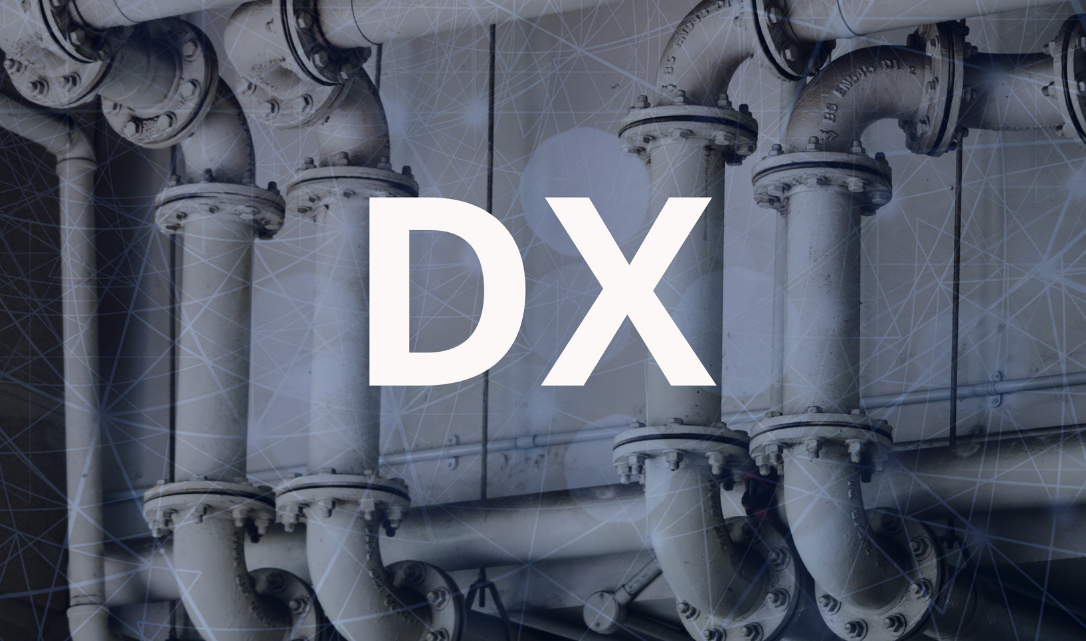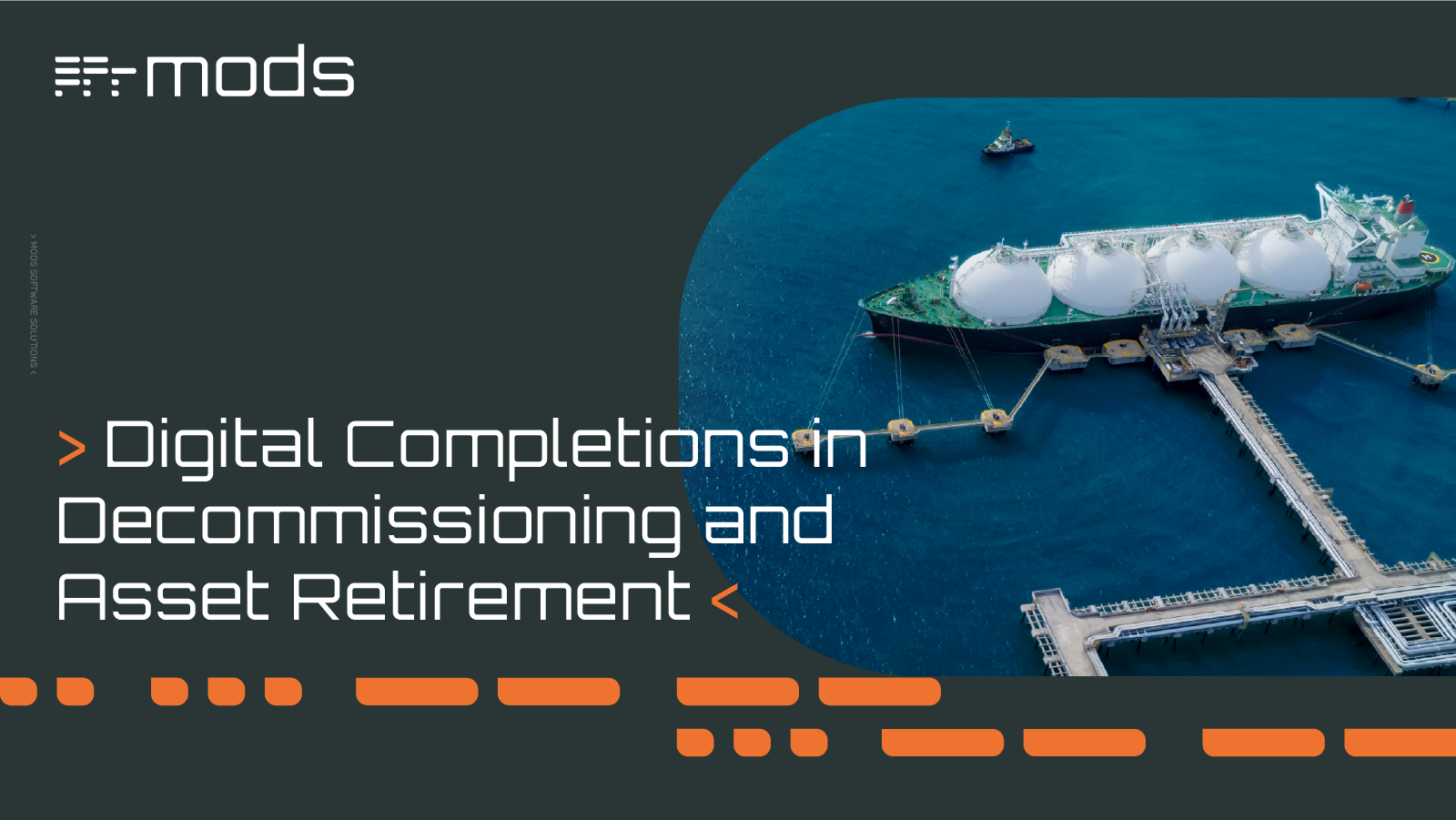Digital Completions in Plant Modifications and Upgrades
Unlike greenfield or any new build construction projects, plant modifications and upgrades present a unique set of challenges. Work is carried out...
5 min read
![]() MODS Marketing
:
Feb 5, 2021 11:40:30 AM
MODS Marketing
:
Feb 5, 2021 11:40:30 AM

Many Service companies in the Energy sector are considered ‘old school’, as they rely heavily on manual processes. However, if your business is online, actively using remote meetings solutions like Microsoft Teams or Zoom, you are already on the road towards digital transformation. In today’s technical world, it is not enough to "be available online”. Businesses that thrive over the next ten years, will be the ones who operate within the Cloud, are paper-less and collaborate seamlessly across global locations even if that is offshore in some of the world's harshest conditions.
Conducting virtual team meetings to discuss, or plan, Joint or Flange management tasks is a critical step in the new global environment, however there is more to DX than just having access to an online meeting facility. Technology needs to be interwoven in all business operations, even ones that seem traditionally manual or labor-intensive tasks.
This blog explores the digital transformation within Joint / Flange management that is essential, not only for safety but, for economic reasons. Businesses are jumping on board with technology providers like MODS to rewrite how they manage Joints, enabling them to deliver more value to their customers and ensuring traceability and accountability in work conducted.
Digital Transformation (DX) is the term used when you make the shift to incorporate technology into your business. The use of Joint Integrity (JI) Management's digital processes will make it easier to plan and execute JI work on all projects. For instance, the online Joint databases that categorize and catalogues the project information relating to that joint are built by simply scanning a QR Code live to the technician. The automation tools instantaneously take over day-to-day activities like status reporting, permits-to-work and materials, allowing employees to focus their efforts on physical tasks—therefore reducing downtime and errors.
The Energy sector is faced with multiple options for enacting digital transformation as an EPC or an Owner Operator. Technology is becoming more commonplace in both Brownfield and Greenfield projects, and there are a significant number of technology vendors to choose from. Having a Digital Transformation Strategy in specific areas within projects and not just overall, will help you become more focused.
There are three key guides you can use as a roadmap for navigating and implementing your digital Joint Integrity Strategy.
Like other plans and strategies, designing your roadmap begins with identifying your purpose. This could be, for example, that flange or bolted Joint connections are still one of the significant sources of leaks on your project, typically one of the top issues in the industry. Once you have your process to focus on then start identifying the ‘why?’ by uncovering your projects' challenges with assembling, dismantling, testing and completions related to the critical work on flanges. What vital items could you digitally advance, what processes will become easier with technology and impact on the success overall? This could be anything from day-to-day project-progress data collection, to monitoring and control of work conducted for safety.
You may be hoping to address multiple challenges at once. For example, your company has had trouble reporting reliable, real-time progress because you are using a manual tag system. The emphasis is on ‘manual’, this data is then reported back in complex spreadsheets, hard to visualize, easy to get wrong. Engineers may have difficulty accessing a Joint’s history because they need to sift through physical records and jump between platforms to find the information they need. This laborious method takes time, resulting in extended downtime with the complimentary frustration caused by the time taken to resolve issues, all due to the lack of data.
The answer to ‘why do you need a transformation in the way Joint Integrity is delivered?’ is very simple and very clear - your service team struggles to give customers the experience they desire because of long wait times and a disorganized or incorrect project data system. Identifying the real, honest challenges will expose your need for a digital transformation, making it easier to create partnerships with the appropriate technology and to drive success in the change you need to apply.
Once you have the ‘why’, it does become easier to figure out what needs to be done, and then prove the value in the change.
Identifying objectives is the next step, you can gather this information by guiding your team through your processes, including workflows, identifying key stakeholders, and assigning critical tasks. If you have multiple pain points, come up with at least one objective or goal for each of them.
You may be looking at:
When you identify these objectives, your next task is to identify a time frame in which they should be met. Your objective may be that, over the course of a pilot project, with a trusted technology provider like MODS, you require a streamlined process for tracking and cataloging JI management information. You may also need a ‘less than one minute’ wait-time for accessing joint records during project interactions. Once the objectives are ascertained, it becomes easier to identify the tools you need, the tools that will assist you along the way.
The final question involves researching and identifying the technology you'll need to successfully transform. Some of these may be ‘middle-of-the-road' tools that help you reach your initial, short-term goal. However, it would be more prudent to find and implement a more permanent solution, technology that can evolve and grow with your business, embrace new developments and industry requirements.
The results of your research will likely give you an understanding of how these technology companies do business. It is advisable to validate if these organizations have implemented and succeeded in a digital transformation project, as experience in the industry is invaluable. You may also uncover possible areas where opting for one company over another will give you access to new, previously unknown, possibilities for your company: which could be the difference that allows your organization to outperform your competitors.
The best advice would be to investigate the choices available, perhaps conduct general, market research to fully understand the trends your industry is experiencing. This will allow you to appreciate and compare various options, or it could simply be a source of inspiration to further guide your process.
Once you have created your initial digital roadmap, it undoubtedly becomes easier to deep dive into your processes and create a finalized list of the technology you will ultimately need.
As the digital world grows, many businesses are keen to harvest the benefits of DX and its high-yielding benefits.
One such company is Grand Isle Shipyard (GIS), a Service company to the energy industry, based in the USA. With more than sixty years of experience in the Energy sector, this ‘Grandfather’ of the petrochemical industry is on its way to fully embracing digital transformation and, in fact, started this journey a decade ago. Their personalized DX evolution has helped bridge the gap between design, construction, commissioning, and handover of projects, all by implementing MODS solutions.
Companies like GIS have risen to the occasion using MODS Connect, Joint Integrity Management and have undergone a digital transformation allowing greater control, transparency and continued impeccable safety records. GIS have digitized traditionally paper-based processes within Joint integrity. This has enabled them to improve, streamline and gain full access to standard operating procedures that ultimately keep people safe and customers’ projects on track.
Be the first to change and improve your competitive edge with digital transformation in your Joint Integrity processes.
Technology partners like MODS are your enabler for DX, their software services and years of industry experience will resolve many of the traditional production problems and enhance internal and external experiences for your business. The Energy sector is slowly embracing the fact that digitizing analogue processes is essential. Health and Safety requirements are also of premium importance and introducing technology will ensure this stays a priority by the digitization of your processes and policies, ensuring that your records are safe and accurate. The selection of your digitization partner is of paramount importance to ensure that your Health and Safety is essential to your new digitized business.
To ensure health and safety is ranked highly, the selection of technology partner is paramount.
Taking the time to create a DX Roadmap; by researching and identifying the necessary tools; fully understanding the trends that have inspired other businesses to change and implement new digital solutions; these are the foundations on which your final decisions will be made. Digital solutions designed for managing Joints or Flange integrity embraces all processes, regardless of their location, onshore or offshore.
Digital transformation will continue to be a focus for 2021, remote access and communication requirements during the pandemic only emphasized the requirement and are motivating decisions to evolve and embrace technology at a greater pace. Perhaps you are looking to address a different business challenge or start a new process entirely, but whatever you seek, the answers will always be found with the right software solution provider.
Want to know more about digital transformation? Go check out our Digital transformation - everything you need to know.

Unlike greenfield or any new build construction projects, plant modifications and upgrades present a unique set of challenges. Work is carried out...

Turnarounds and shutdowns are among the most critical—and stressful—phases in the management and operation of industrial assets. These planned...

Offshore decommissioning and asset retirement present significant logistical, regulatory, safety, fiscal and reputational challenges. The process of...

As businesses compete to remain competitive and ensure long-term sustainability, they are incorporating technology to manage business risks and...

The energy transition poses the biggest challenge ever faced by Oil and Gas. As the energy sector evolves towards cleaner processes and reducing...

They are designed to withstand some of the harshest conditions on the planet. They tower hundreds of meters above the water and can be as broad as...